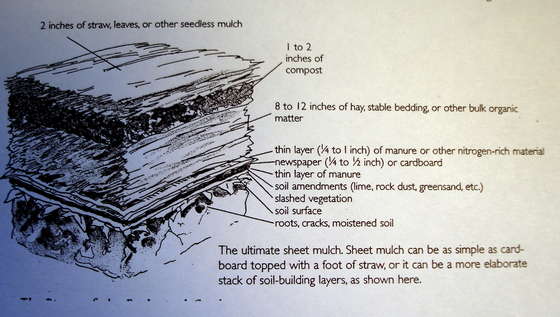Nibbles, our regional groundhog celebrity, decreed (with Shadow advising behind the scenes) that Spring will arrive early this year.
Great advice from an adorable rodent that loves to eat precious crops.

Picture from www.fireflyfans.net
Still, it’s an excuse to ignore the icy hug of winter and prepare for the season of rejuvenation. If this is the first year for growing, or you have some questions about your land and how to best prepare it, here’s some prep to get you ready for Spring and Nibbles’ future buffet.
- If you’re unsure about what kind of minerals and nutrients your land either owns or lacks, it would be wise to get a soil test. NC State’s Extension office offers explicit instructions on how to take a soil test.
- Determine what kind of garden best fits your ideals. If you’re just busting to get out and feel the dirt, there are no-dig approaches. In fact, a lot of gardeners follow this method. The best argument for no-tilling is that regular tilling disrupts the beneficial microbes’ (i.e. mycorrhizae) ecosystem. For a concise scientific explanation, check out the book, Teaming with Microbes.
- The best early season no-till garden is Sheet Mulching (aka lasagna gardening, sheet composting): This is a great permaculture garden because you create it during the cold months. Sheet mulching essentially mimics the richness of the forest floor. The basic set -up is to find a spot of ill repute (gangs of weeds and such) and flatten it down. Then it’s just a matter of layering (* there are many variations to sheet mulching; this is just one):
- Take a soil test if necessary
- Add a layer of raw compost to give the earthworms and the microbes food.
- Put down a layer of cardboard, or newspaper (six layers at least), or even old clothes to smother any potential weeds. The choked out weeds become delicious worm food. Water until saturated.
- Add a fresh layer of compost (like McEnroe), and/or fresh grass clippings (if possible). An inch or so will do.
- Next, you want the forest floor. Add weed free elements like shredded leaves, shredded wood chips, etc. Make this about 3-5 inches deep.
- Add a thin layer of more compost if you like. Water thoroughly.
- Ideally, this will be the top layer for the seedlings. However, there’s a chance you may have to add more “forest floor additives” before Spring hits. The worms should have a feast now, aerating your new bed without tilling.
- The bed will be full of nutrients, but it won’t hurt to add amendments like Azomite (a soil re-mineralizer) and Nature’s Nog Granular, which will help plants’ immunity as well as making all minerals in the soil available.
- Also, check out this more elaborate sheet mulch design below:

*If you are interested in learning more (and you are in the Asheville area), there will be a sheet mulching course through Earth and Spirit Design on Saturday Morning, Feb. 5th.
For more info, go here.
Next Up: We prepare Nibbles’ favorite foods from seed, including broccoli, kale, cabbages, and, yes, even some mouth-watering flowers.

Leave a Reply